 W
WAustralia entered World War II on 3 September 1939, following the government's acceptance of the United Kingdom's declaration of war on Nazi Germany. Australia later entered into a state of war with other members of the Axis powers, including the Kingdom of Italy on 11 June 1940, and the Empire of Japan on 9 December 1941. By the end of the war, almost a million Australians had served in the armed forces, whose military units fought primarily in the European theatre, North African campaign, and the South West Pacific theatre. In addition, Australia came under direct attack for the first time in its post-colonial history. Its casualties from enemy action during the war were 27,073 killed and 23,477 wounded. Many more suffered from tropical disease, hunger, and harsh conditions in captivity: of the 21,467 Australian prisoners taken by the Japanese only 14,000 survived.
 W
WThe Advisory War Council (AWC) was an Australian Government body during World War II. The AWC was established on 28 October 1940 to draw all the major political parties in the Parliament of Australia into the process of making decisions on Australia's war effort and was disbanded on 30 August 1945.
 W
WBetween February 1942 and November 1943, during the Pacific War of World War II, the Australian mainland, domestic airspace, offshore islands and coastal shipping were attacked at least 111 times by aircraft from the Imperial Japanese Navy Air Force and Imperial Japanese Army Air Force. These attacks came in various forms; from large-scale raids by medium bombers, to torpedo attacks on ships, and to strafing runs by fighters.
 W
WThe following is a list of anti-aircraft defences of Australia during World War II. Prior to the war Australia possessed only very limited air defences. However, by late-1942 an extensive anti-aircraft defence organisation had been developed, with anti-aircraft batteries in place around all the major cities as well as the key towns in northern Australia. A total of two Heavy Anti-Aircraft (HAA) regiments, 32 static HAA batteries, 11 Light Anti-Aircraft (LAA) regiments, 16 independent LAA batteries, three anti-aircraft training regiments and one anti-aircraft training battery were formed. These units were equipped with a range of weapon systems including 3.7 inch anti-aircraft guns and 40 mm Bofors guns. In addition six American anti-aircraft battalions were stationed in Australia, operating in Fremantle, Darwin, Townsville, and Brisbane.
 W
WThe Aso Mining forced labour controversy concerns the use of Allied prisoners of war (POW) and Korean conscripts as labourers for the Aso Mining Company in Japan during World War II. Surviving labourers and other records confirmed that the prisoners and conscripts were forced to work in harsh, brutal conditions for little-to-no pay and that some died, at least in part, because of the ill-treatment at the mine.
 W
WAustralia in the War of 1939–1945 is a 22-volume official history series covering Australian involvement in the Second World War. The series was published by the Australian War Memorial between 1952 and 1977, most of the volumes being edited by Gavin Long, who also wrote three volumes and the summary volume The Six Year War.
 W
WThe Australian Army was the largest service in the Australian military during World War II. Prior to the outbreak of war the Australian Army was split into the small full-time Permanent Military Forces (PMF) and the larger part-time Militia. Following the outbreak of war, on 14 September 1939 Prime Minister Robert Menzies announced that 40,000 members of the Militia would be called up for training and a 20,000-strong expeditionary force, designated the Second Australian Imperial Force, would be formed for overseas service. Meanwhile, conscription was introduced in October 1939 to keep the Militia at strength as its members volunteered for the AIF. The Australian Army subsequently made an important contribution to the Allied campaigns in the Mediterranean, the Middle East and North Africa fighting the Germans, Italians and Vichy French during 1940 and 1941, and later in the jungles of the South West Pacific Area fighting the Japanese between late 1941 and 1945. Following the Japanese surrender Australian Army units were deployed as occupation forces across the South West Pacific. Meanwhile, the Army contributed troops to the British Commonwealth Occupation Force (BCOF) in Japan from 1946.
 W
WOver 27,000 Australians were killed and 23,000 wounded in action during World War II. In addition, hundreds more servicemen and women were killed and injured in accidents during the war.
 W
WThe Australian contribution to the Battle of Normandy involved more than 3,000 military personnel serving under British command. The majority of these personnel were members of the Royal Australian Air Force (RAAF), though smaller numbers of Australians serving with the Royal Navy and British Army also participated in the fighting prior to and after the Allied landings on 6 June 1944. While all the RAAF units based in the United Kingdom (UK) took part in the battle, Australians made up only a small portion of the Allied force.
 W
WThe Bangka Island massacre was committed during World War II in the Pacific, on Bangka Island, east of Sumatra in the Indonesian archipelago. On 16 February 1942, Imperial Japanese soldiers machine-gunned 22 Australian Army nurses and 60 Australian and British soldiers and crew members who had survived the sinking of Vyner Brooke by Japanese bombers. South Australian nurse Sister Lt Vivian Bullwinkel, an American Eric Germann and Stoker Ernest Lloyd RN were the only survivors.
 W
WThe Belmont Anti-Tank Ditch was an anti-tank trench constructed in 1942 as part of the southern perimeter defensive system of the Port of Newcastle, New South Wales, Australia, as part of Fortress Newcastle during World War II. The anti-tank ditch was located 12 kilometres south of Newcastle, south of the town of Belmont.
 W
WThe "Brisbane Line" was a defence proposal supposedly formulated during World War II to concede the northern portion of the Australian continent in the event of an invasion by the Japanese. Although a plan to prioritise defence in the vital industrial regions between Brisbane and Melbourne in the event of invasion had been proposed in February 1942, it was rejected by Labor Prime Minister John Curtin and the Australian War Cabinet. An incomplete understanding of this proposal and other planned responses to invasion led Labor minister Eddie Ward to publicly allege that the previous government had planned to abandon most of northern Australia to the Japanese.
 W
WThe British Commonwealth Air Training Plan (BCATP), or Empire Air Training Scheme (EATS) often referred to as simply "The Plan", was a massive, joint military aircrew training program created by the United Kingdom, Canada, Australia and New Zealand, during the Second World War. BCATP remains as one of the single largest aviation training programs in history and was responsible for training nearly half the pilots, navigators, bomb aimers, air gunners, wireless operators and flight engineers who served with the Royal Air Force (RAF), Royal Navy Fleet Air Arm (FAA), Royal Australian Air Force (RAAF), Royal Canadian Air Force (RCAF) and Royal New Zealand Air Force (RNZAF) during the war.
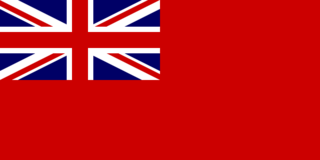 W
WMerchant seamen crewed the ships of the British Merchant Navy which kept the United Kingdom supplied with raw materials, arms, ammunition, fuel, food and all of the necessities of a nation at war throughout World War II — literally enabling the country to defend itself. In doing this, they sustained a considerably greater casualty rate than almost every other branch of the armed services and suffered great hardship. Seamen were aged from fourteen through to their late seventies.
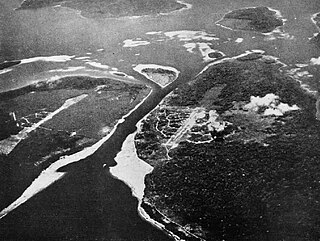 W
WBetween 9 March and 5 April 1942 during World War II, forces of the Empire of Japan occupied the islands of Buka and Bougainville in the South Pacific. At that time these islands were part of the Australian-administered Territory of New Guinea. A platoon of Australian commandos from the 1st Independent Company was located at Buka Airfield when the Japanese landed but did not contest the invasion.
 W
WThe Invasion of Buna–Gona, called Operation RI by the Japanese, was a military operation by Imperial Japanese forces to occupy the Buna–Gona area in the Territory of Papua during the Pacific campaign of the Second World War. The initial landings and advance on Kokoda occurred between 21 and 27 July 1942. The Japanese invaded and occupied the location in preparation for an overland attack on Port Moresby along the Kokoda Track. The landing marked the start of the Kokoda Track campaign. The landings were not directly opposed by land forces but were engaged by elements of Maroubra Force as they advanced on Kokoda. This initially included B Company of the 39th Battalion, patrols of the Papuan Infantry Battalion (PIB) operating in the area and a small number of the Australian New Guinea Administrative Unit (ANGAU) that became attached to the force. The Australians were initially repulsed near Oivi but subsequently regrouped to defend Kokoda in an initial battle there from 28–29 July.
 W
WCamden Airport is an aerodrome located on the outskirts of Sydney 1 nautical mile northwest of Camden, New South Wales, Australia. The airport is located approximately 60 km (37 mi) from Sydney's central business district. Camden is used as a general aviation overflow airport for the busier Bankstown Airport; and provides facilities for gliding and ballooning. The aerodrome has one grass- and one paved runway and two glider airstrips. It is in the south-west corner of the designated Sydney flight training area.
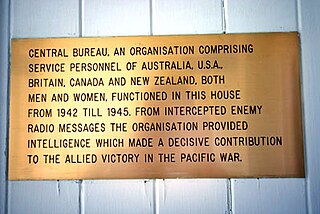 W
WThe Central Bureau was one of two Allied signals intelligence (SIGINT) organisations in the South West Pacific area (SWPA) during World War II. Central Bureau was attached to the headquarters of the Allied Commander of the South West Pacific area, Douglas MacArthur. Central Bureau's role was to research and decrypt intercepted Imperial Japanese Army traffic and work in close co-operation with other SIGINT centres in the USA, United Kingdom and India. Air activities included both army and navy air forces, as there was no independent Japanese Air Force.
 W
WThe Battle of Christmas Island was a small engagement which began on 31 March 1942, during World War II. Assisted by a mutiny by soldiers of the British Indian Army against their British officers, Imperial Japanese Army troops were able to occupy Christmas Island without any land-based resistance. The United States Navy submarine Seawolf caused severe damage to the Imperial Japanese Navy cruiser Naka during the landings.
 W
WThe following is a List of Coastal Batteries in Australia and Territories during World War II. The main threat came early in the war from German raiders and threat of Japanese raids or invasion, and hence all available ordnance was pressed into service, including some obsolete guns and field guns adapted for coast defence.
 W
WThe Cocos Islands mutiny was a failed mutiny by Sri Lankan soldiers against British officers, on the Cocos (Keeling) Islands on 8 May 1942, during the Second World War.
 W
WThe Commonwealth Aircraft Corporation (CAC) was an Australian aircraft manufacturer. The CAC was established in 1936, to provide Australia with the capability to produce military aircraft and engines.
 W
WThe Cowra breakout occurred on 5 August 1944, when 1,104 Japanese prisoners of war attempted to escape from a prisoner of war camp near Cowra, in New South Wales, Australia. It was the largest prison escape of World War II, as well as one of the bloodiest. During the escape and ensuing manhunt, 4 Australian soldiers and 231 Japanese soldiers were killed. The remaining escapees were re-captured and imprisoned.
 W
WThe demobilisation of the Australian military after World War II involved discharging almost 600,000 men and women from the military, supporting their transition to civilian life and reducing the three armed services to peacetime strengths. Planning for the demobilisation process began in 1942 and thousands of servicemen and women were discharged in the last years of the war in response to shortages of labour in the domestic war economy. The general demobilisation of the military began in October 1945 and was completed in February 1947. The demobilisation process was largely successful, but some military personnel stationed in the South West Pacific complained that their repatriation to Australia was too slow.
 W
WEvans Head Memorial Aerodrome is a heritage-listed airport in Evans Head, Richmond Valley Council, New South Wales. The airport is approximately 1 km (0.62 mi) north of the village. During World War II it was Royal Australian Air Force (RAAF) Station Evans Head supporting RAAF No 1 Bombing and Gunnery School (1BAGS) and subsequently the RAAF No 1 Air Observers School. At the height of operations there were three asphalt runways and one grass strip. Only a single asphalt strip is still in use by private aviation. It was added to the New South Wales State Heritage Register on 22 November 2002.
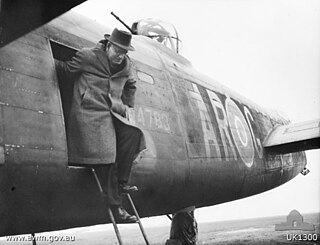 W
WG for George is an Avro Lancaster Mk. I bomber, squadron code AR-G and serial number W4783, operated by No. 460 Squadron RAAF during World War II. It is now preserved at the Australian War Memorial (AWM), Canberra, Australia.
 W
WGovernment Aircraft Factories (GAF) was the name of an aircraft manufacturer owned by the Government of Australia based at Fishermans Bend, a suburb of Melbourne in Victoria. It had its origins in the lead-up to World War II, during which it was known as the Department of Aircraft Production (DAP). In 1987, GAF was reorganised and renamed as Aerospace Technologies of Australia (ASTA) then privatised. ASTA was purchased by Rockwell USA, who was in turn purchased by Boeing a few years later. ASTA subsequently formed the nucleus of Boeing Australia.
 W
WAlthough most Australian civilians lived far from the front line of World War II, the Australian home front during World War II played a significant role in the Allied victory and led to permanent changes to Australian society.
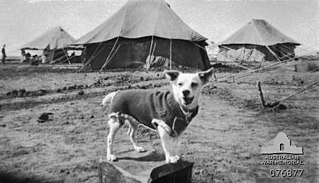 W
WHorrie the Wog Dog was the unofficial mascot for the 2/1st Machine Gun Battalion of the Second Australian Imperial Force. An Egyptian terrier, the dog was befriended by a soldier serving in the unit when it was stationed in Egypt during the Second World War. The dog subsequently followed the battalion throughout various locations in the Middle East and in Greece and Crete, before being smuggled back to Australia in 1942. In 1945, the dog became the subject of a book by author Ion Idriess, and is believed to have been destroyed by quarantine officials, although this remains the subject of speculation with some researchers claiming that the dog survived after its owner switched it with another prior to destruction.
 W
WHoxton Park Airport was a general aviation aerodrome in south-western Sydney, New South Wales, Australia.
 W
WAgnes Betty Jeffrey, OAM was an Australian writer who wrote about her Second World War nursing experiences in the book White Coolies.
 W
WThe MV Krait is a wooden-hulled vessel famous for its use during World War II by the Z Special Unit of Australia during the raid against Japanese ships anchored in Singapore Harbour. The raid was known as Operation Jaywick.
 W
WKutini-Payamu is a National Park located in Queensland, Australia, 1,940 kilometres (1,210 mi) northwest of Brisbane and 100 kilometres (62 mi) east of Weipa in the Cape York Peninsula, Queensland. Within the National Park is the Iron Range, Scrubby Creek mining site and the Aboriginal Shire of Lockhart River. During World War II several Australian Army units were stationed in the area.
 W
WThe Magnetic Battery, Fort War or The Forts, as it is commonly referred, is a former Royal Australian Navy artillery battery in the hinterland of Horseshoe. Florence and Arthur Bays on Magnetic Island. Built in 1942/1943, the battery operated from July 1943 until the end of World War II. The remains of the facility are now maintained by Queensland Parks and Wildlife Service as part of the Magnetic Island National Park and are open to visitors year round.
 W
WThe "Morotai Mutiny" was an incident in April 1945 involving members of the Australian First Tactical Air Force based on the island of Morotai, in the Dutch East Indies. Eight senior pilots, including Australia's leading flying ace, Group Captain Clive Caldwell, tendered their resignations to protest what they perceived as the relegation of Royal Australian Air Force (RAAF) fighter squadrons to strategically unimportant ground attack missions against Japanese positions that had been bypassed in the Allies' "island-hopping" campaign. A government investigation vindicated the "mutineers", and three high-ranking officers at First Tactical Air Force Headquarters, including the commander, Air Commodore Harry Cobby, the Australian Flying Corps' top-scoring ace during World War I, were relieved of their posts.
 W
WThe New South Wales Lancers Memorial Museum is a military museum at Linden House, 2 Smith Street, Parramatta, Sydney, Australia. The museum's collection is heritage-listed, having been added to the New South Wales State Heritage Register on 14 May 2010.
 W
WNewington Armory is a heritage-listed former Royal Australian Navy armament depot, now used for tourism purposes, at Holker Street, Sydney Olympic Park, Cumberland Council, New South Wales, Australia. It was built from 1897 by the Royal Australian Navy. It is also known as Millennium Heritage Parklands Precinct, RAN Armament Depot Newington, Royal Australian Navy Armament Depot (RANAD), Newington Nature Reserve and Sydney Olympic Games. The property is owned by the Sydney Olympic Park Authority. It was added to the New South Wales State Heritage Register on 14 January 2011.
 W
WThe Oaks Airfield is an unlicensed private airfield located in The Oaks, New South Wales in the Wollondilly Shire, west of Sydney Australia. Originally built by the Royal Australian Air Force (RAAF) during World War II, today the airfield caters mostly to recreational aircraft and flight training and is home to Dave's Flying School and the Sydney Recreational Flying Club. The airfield is a heritage listed site and is the only airport constructed during WWII to still be operational. Other airfields from the time in Sydney have either being converted or demolished,
 W
WWilma Elizabeth Forster Young AM was an Australian Army nurse during the Second World War. She was evacuated from Singapore in February 1942 and was aboard the Vyner Brooke when the ship was sunk in Bangka Strait by Japanese aircraft. After surviving in the water for many hours she came ashore at Bangka Island and became a prisoner of war (POW) until 1945. Vivian Bullwinkel and Betty Jeffrey were captives together with Oram.
 W
WOn 23 January 1942, the Parit Sulong Massacre in Johor, Malaya was committed against Allied soldiers by members of the Imperial Guards Division of the Imperial Japanese Army. A few days earlier, the Allied troops had ambushed the Japanese near Gemas and blown up a bridge there.
 W
WThe aircrews of RAF Bomber Command during World War II operated a fleet of bomber aircraft carried strategic bombing operations from September 1939 to May 1945, on behalf of the Allied powers. The crews were men from the United Kingdom, other Commonwealth countries, and occupied Europe, especially Poland, France, Czechoslovakia and Norway, as well as other foreign volunteers. While the majority of Bomber Command personnel were members of the RAF, many belonged to other air forces – especially the Royal Canadian Air Force (RCAF), Royal Australian Air Force (RAAF) and Royal New Zealand Air Force (RNZAF). Under Article XV of the 1939 Air Training Agreement, squadrons belonging officially to the RCAF, RAAF, and RNZAF were formed, equipped and financed by the RAF, for service in Europe. While it was intended that RCAF, RAAF, and RNZAF personnel would serve only with their respective "Article XV squadrons", in practice many were posted to units of the RAF or other air forces. Likewise many RAF personnel served in Article XV squadrons.
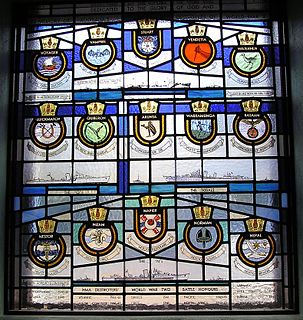 W
WThe Scrap Iron Flotilla was an Australian destroyer group that operated in the Mediterranean and Pacific during World War II. The name scrap iron flotilla was bestowed upon the group by Nazi Propaganda Minister Joseph Goebbels.
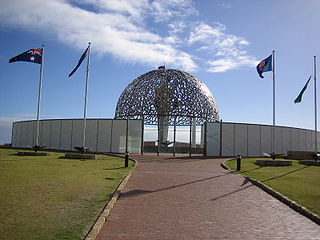 W
WNumerous attempts were made to find the Australian cruiser HMAS Sydney and the German auxiliary cruiser Kormoran, which were both lost in a sea battle in 1941. Efforts immediately after the battle focused on finding Sydney when she failed to return to port. While searchers located over 300 survivors from Kormoran, none of the 645 aboard the Australian warship were found.
 W
WElements of the Second Australian Imperial Force (AIF) were located in the United Kingdom (UK) throughout World War II. For most of the war, these comprised only a small number of liaison officers. However, between June and December 1940 around 8,000 Australian soldiers organised into two infantry brigades and supporting units were stationed in the country. Several small engineer units were also sent to the UK, and up to 600 forestry troops were active there between July 1940 and mid-1943. A prisoner of war (POW) repatriation unit arrived in the UK in August 1944, and over 5,600 released AIF prisoners eventually passed through the country. Following the war, small numbers of Australian soldiers formed part of a military cricket team which toured England, and the Army contributed most members of the Australian contingent to the June 1946 victory parade in London.
 W
WShelly Battery was a coastal battery located at Shelly Head, Manly, Sydney, New South Wales, Australia. The battery was constructed in 1942 during the Second World War and consisted of 1 x QF 12 pounder gun and a command post.
 W
WOperation Source was a series of attacks to neutralise the heavy German warships – Tirpitz, Scharnhorst and Lützow – based in northern Norway, using X-class midget submarines.
 W
WThe South Pacific air ferry route was initially established in the 1920s to ferry United States Army Air Service aircraft to the Philippines. As the Japanese threat in the Far East increased in 1940, General Douglas MacArthur planned that in the event of war, the United States Army Air Corps would play a major role in defending the Philippines. The reinforcement by the Air Corps of forces in the Philippines, and later Allied forces in Australia, became the basis for developing the South Pacific air ferry route used during World War II.
 W
WThe South West Pacific theatre, during World War II, was a major theatre of the war between the Allies and the Axis. It included the Philippines, the Dutch East Indies, Borneo, Australia and its mandate Territory of New Guinea and the western part of the Solomon Islands. This area was defined by the Allied powers' South West Pacific Area (SWPA) command.
 W
WSparrow Force was a detachment based on the 2/40th Australian Infantry Battalion and other Dutch, British, US and Australian 8th Division units during World War II. The force was formed to defend the island of Timor from invasion by the Empire of Japan. It formed the main part of the Allied units in the Battle of Timor.
 W
WThe structure of the Australian Army changed considerably during World War II. At the outbreak of war the Army comprised a small regular component and a large, but ill-trained and equipped, militia force. In September 1939 the government authorised the establishment of the Second Australian Imperial Force for overseas service; this force eventually reached a strength of four infantry divisions, an armoured division and various headquarters and support units. The militia force, which remained in Australia, was neglected until the outbreak of the Pacific War.
 W
WTask Force 44 was an Allied naval task force during the Pacific Campaign of World War II. The task force consisted of warships from the United States Navy and the Royal Australian Navy (RAN). It was generally assigned as a striking force to defend northeast Australia and the surrounding area from any attacks by Axis forces, particularly from the Empire of Japan.
 W
WDuring World War II, the United States Army Air Forces established a series of airfields in Australia for the collective defense of the country, as well as for conducting offensive operations against the Imperial Japanese Army and Navy. From these airports and airfields in Australia, the Fifth Air Force was able to regroup, re-equip and begin offensive operations against the Empire of Japan after the disasters in the Philippines and Dutch East Indies during 1942.
 W
WWinnie the War Winner was a radio set built by Sparrow Force during the Battle of Timor in 1942. The radio re-established contact between Sparrow Force and the Australian Army in Darwin on 19 April 1942. At the time, the Allies believed that Sparrow Force had been captured by the Japanese Army. By then, Sparrow Force had fought a guerrilla campaign isolated from Australia for 60 days.
 W
WThe Women's National Emergency Legion (WNEL) was an Australian female auxiliary and training organisation of the World War II-era that was based in Brisbane. It was established in 1938 and provided volunteers with training in first aid and other skills which were seen as being relevant to Australia's war effort. Following the outbreak of the Pacific War members of the organisation were attached to the US military units in Australia as transport drivers and clerks. They also undertook mine watching and other tasks. The organisation ceased to exist in or about 1947.